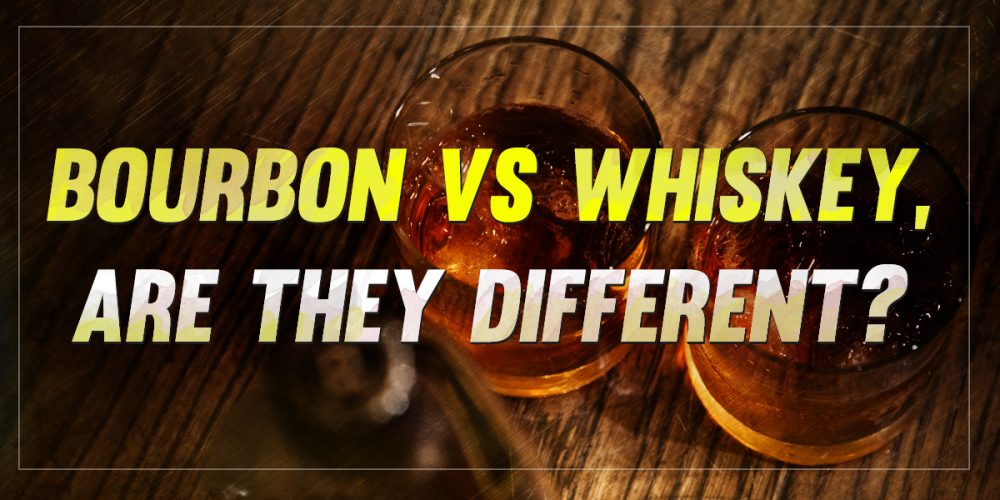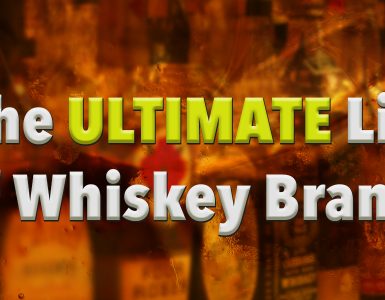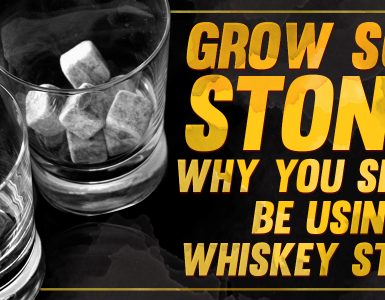For someone like myself who is not exactly an avid drinker, a popular statement such as, “All Bourbons are whiskey, but not all whiskeys are Bourbon” could sound particularly snobbish to the ear. Not know your whiskey from your Bourbon? What horrors!
But that’s because I’m just your average Joe who, in all honesty, needs to learn a little more about the distinctions between drinks so that I don’t end up seeming like an ignorant, unrefined buffoon. For someone who simply goes for anything — so long as it tastes good — making a distinction is difficult, so I’ve set about finding answers to whether the two are in fact different, or one and the same.
Okay, for a moment, let’s say I’m looking to refine my palate so that I can better appreciate all the subtle distinctions between my whiskeys, how would I make the comparison? To give you a clear idea of how complicated this question can be, let’s first talk about whiskey in general.
Different types of Whiskey — Scotch, Irish, Canadian, Rye, Tennessee, and Bourbon — are similar in the sense that they are all distilled from either fermented grain (barley, rye, wheat) or corn mash, and are similarly golden brown in color. What sets them apart from each other, at the most basic, is their geography or where the alcohol was distilled.
For instance, Scotch whiskey (whisky without the “e” for non-Americans) is from Scotland; Irish is, of course, from the Republic of Ireland or Northern Ireland; and Bourbon is proudly American-made. Geography impacts on your whiskey’s outcome in the sense that locally available ingredients may differ, particularly with the type of grain mash used (like Scotch is mostly made from malted barley; while bourbon is mostly made from corn). Climate and temperature differences can also affect fermentation, as do the incorporation of cultural practices and local and traditional processing methods. All these small differences together contribute to the distinct and unique characteristics of the spirit produced.
As if understanding the slight differences among the different whiskies weren’t complicated enough, there are also different sub-categories to consider, this time having to do with specific percentages of the ingredients found in each type of whiskey. It can all be very confusing: For instance, in Canada, for as long as there’s some rye in the drink, it’s classified as a rye whiskey; not so in other places, where there has to be strictly 40% rye or more for your drink to be called such.
Meanwhile, ‘white whiskey’ or moonshine, which is generally made from corn mash, is thought by experts not to have any business calling itself a whiskey at all, since it is neither dark nor aged.
But even among the bourbons, distinctions are made between drinks produced in different places. There’s the Tennessee, which is basically also a Bourbon, but distinguished from other Bourbons which are mostly from Kentucky. Tennessee whiskey, such as Jack Daniels, brings the whole bourbon whiskey discrimination class up to a whole new level; it is actually in a class all on its own, as recognized by the U.S government. The whole process for making Tennessee is pretty much similar to how all other bourbons are made, except that at the end of the distillation process, the liquid is filtered through maple charcoal.
The Story Behind Bourbon
Bourbon, which was declared as “America’s Native Spirit” in 1964, dates to as far back as the prohibition. At the time, the American government had to define strict alcohol-related regulations, which resulted in a final whiskey product — Bourbon. Bourbon had to (and still has to) meet six very specific legal requirements, to wit:
Made in the USA
Without question, the drink MUST be made in the USA. About 95 percent of Bourbon is made in Kentucky, and it has been said that Kentucky is home to more barrels of bourbon than people. However, bourbon can be made anywhere in the U.S.
Grain mash must contain at least 51 percent corn
Whether there’s rye, wheat, or malted barley included in the mix, or whether or not a “sour mash” is added to kick off fermentation, the ratio of other grain mash included is irrelevant. (Remember, however, that sub-categories exist, so you’ll still have your high rye, wheaters, high corn…all bourbon, all wanting to be unique.)
But why corn, right? Apparently, to distinguish American-made from so many types of whiskeys everywhere trying to pass themselves off as ‘bourbon’. Corn makes the whiskey naturally sweet, and making the percentage of corn specific makes a lot of sense, given that there is corn aplenty in Kentucky; corn, therefore, is the perfect ingredient to use to make the distinctive Kentucky bourbon.
Free from additives during distillation
In a serious attempt to minimize alcohol content (remember, these regulations came into effect during the prohibition), water could to be added during the distillation process, but nothing else. You could well be thinking, “But that means Bourbon is basically just watered-down whiskey!” To counter this assertion, and because no one wanted their whiskey bland, producers had to be extra creative in finding a unique source for added flavor, which happens to be given off by the barrels in which the whiskey is aged.
- Note: There are varieties of bourbon which do allow additives such as coloring and sweeteners, but these are known as the ‘bastard bourbons.’
Must be aged in new, charred, oak barrels
Because the flavor of bourbon highly depends on its barrels, those flavors must be distinct. Though most other whiskeys may be aged in pre-used barrels, Bourbons must always be poured into new oak ones with interiors recently charred before the liquid is poured in.
As strict as producers of bourbon may seem when it comes to the type of barrel, they aren’t so much so when it comes to climate control. Different temperatures may affect the wooden barrels, so in the same rickhouse, the whiskey in barrels stacked high or near the ceiling might taste different from those stacked on the floor.
Less than 160 proof
The alcohol-by-volume (ABV) content produced must not exceed 80 percent or 160-proof if it is to be considered true Bourbon. Usually, bourbons are between the range of 80-160 proof, but they rarely exceed 130 proof. They are usually poured into the barrel at 125 proof. The reason for this, again, is said to be for ‘distinct flavor.’ Keeping the alcohol percentage below 80% allows more flavor to be maintained after distillation.
Aged for at least 2 years
Two years is actually the minimum number of years required prior to bottling, although there is no maximum aging time for bourbon. Anything aged below 4 years is considered a young bourbon. The thing with bourbon is, its quality has little to do with its age, so you can always get a good quality young bourbon as likely as you can an awful-tasting aged one — and that’s where the better brands distinguish themselves.
If anything, now that I know all this, I can at least speak with some semblance of authority when it comes to distinguishing between Bourbon and whiskey — I won’t come off like a blithering idiot who doesn’t know one drink from the other. That being said, let’s hit the bar and do some further research, shall we?
















